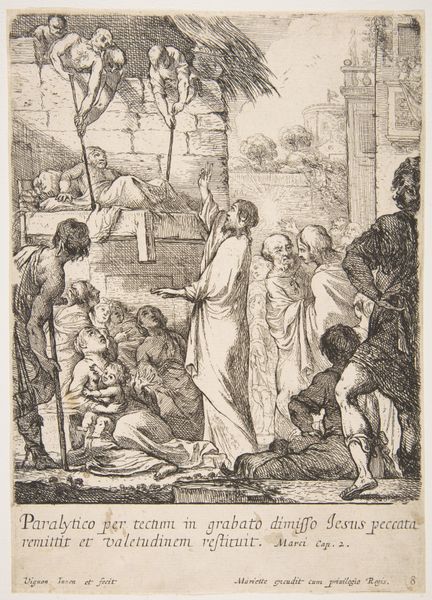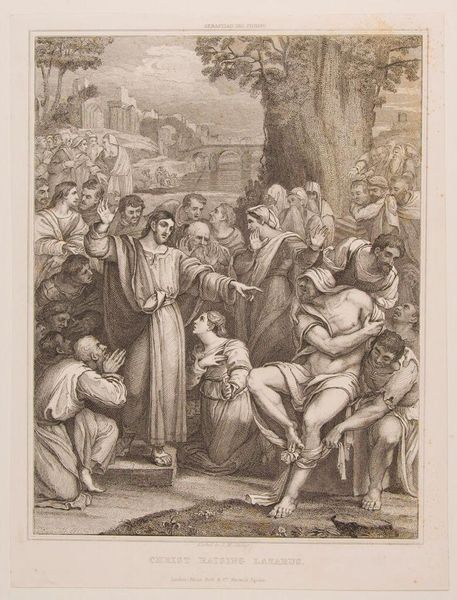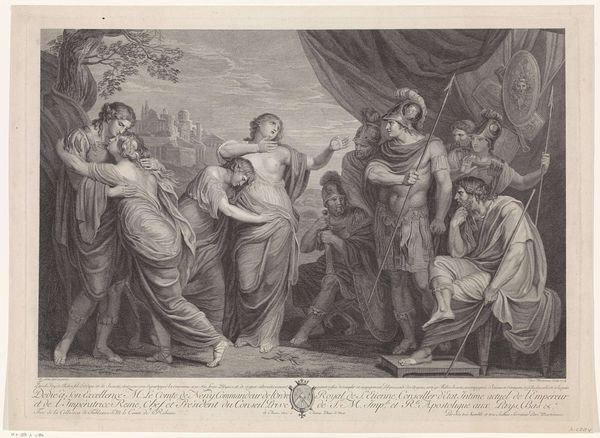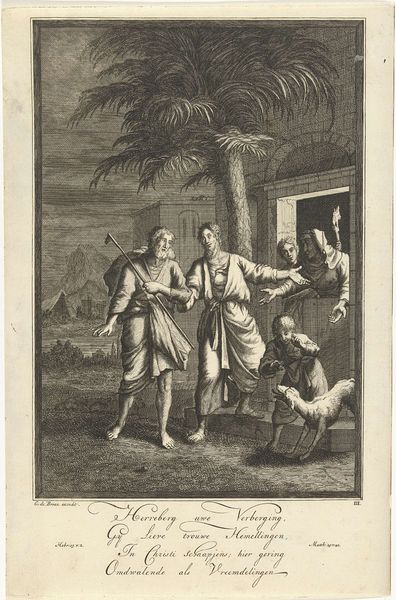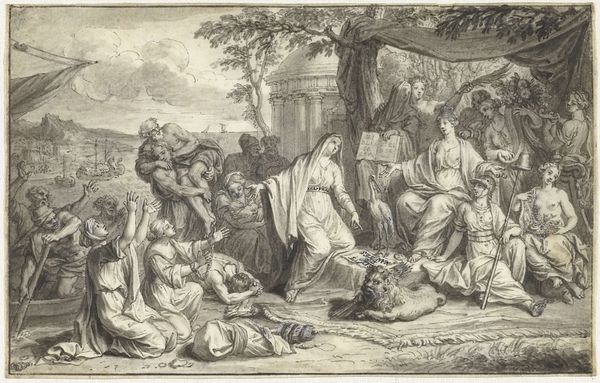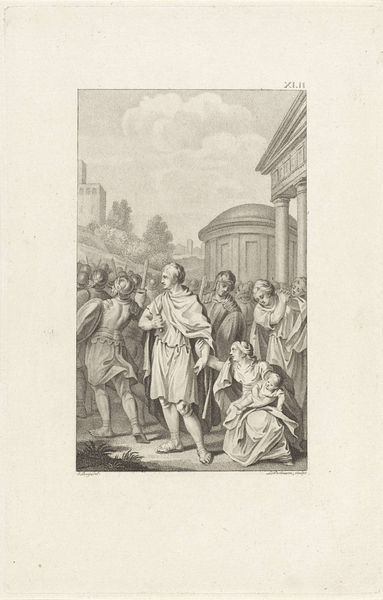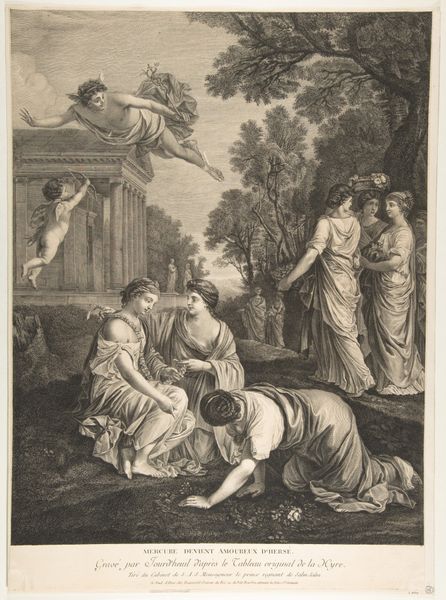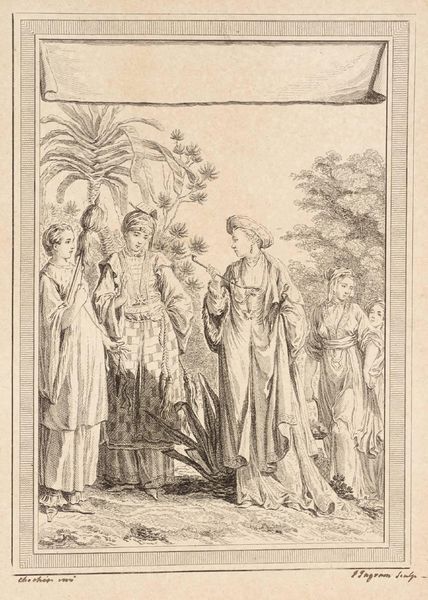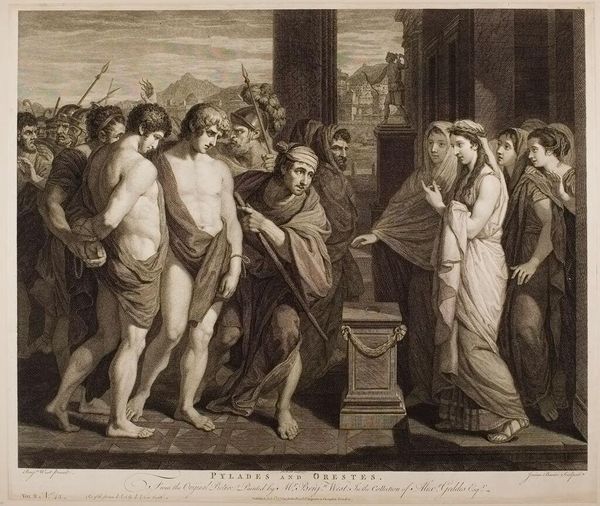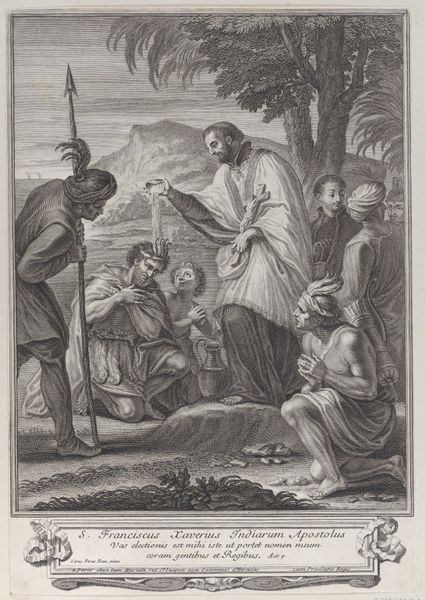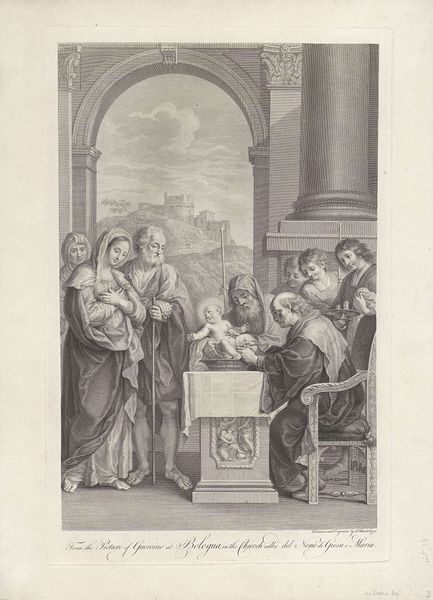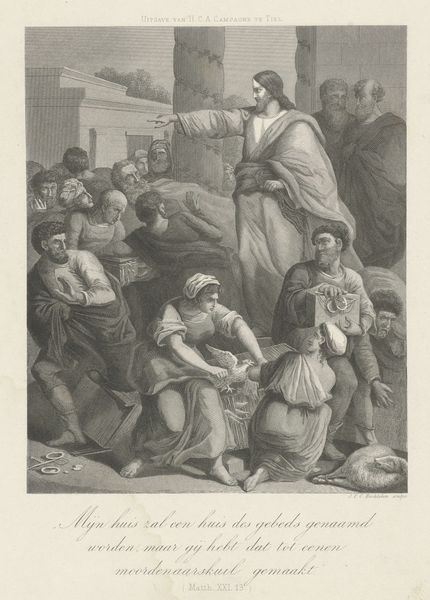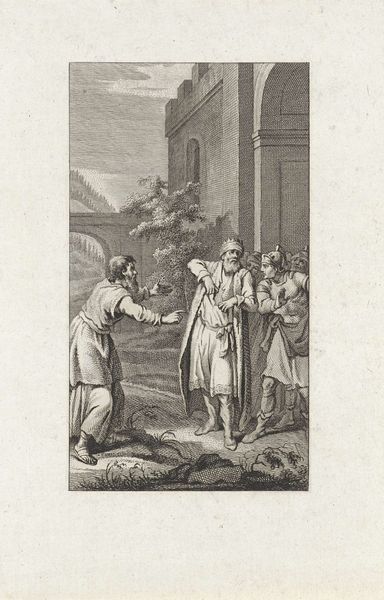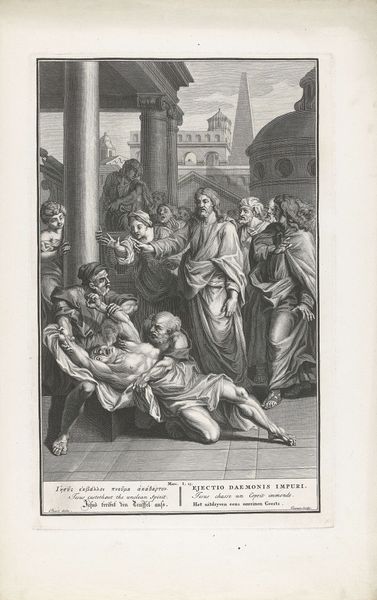
drawing, paper, ink, charcoal
#
drawing
#
narrative-art
#
baroque
#
charcoal drawing
#
figuration
#
paper
#
ink
#
pencil drawing
#
portrait drawing
#
charcoal
#
history-painting
Dimensions: height 341 mm, width 280 mm
Copyright: Rijks Museum: Open Domain
Editor: This drawing, "Christ Healing Two Blind Men," by Louis Fabritius Dubourg, made between 1748 and 1749, really strikes me with its soft tonality and almost theatrical arrangement of figures. What do you see in this piece? Curator: I see a work deeply embedded in its time, reflecting the power structures and social expectations around faith, disability, and representation. Notice how Christ, positioned centrally and bathed in implied light, embodies divine authority while the blind men are literally on their knees. What does this physical positioning suggest to you about access to power? Editor: I guess it emphasizes their vulnerability and dependence. Like they have to be in that position to receive any help. Curator: Precisely. Now, think about the historical context: the Enlightenment was challenging traditional religious authority, yet art like this reinforced those very structures. The drawing uses a biblical narrative to communicate very specific ideas about social hierarchy and who is seen, or rather, unseen. Consider, also, who has historically controlled narratives around disability and healing. Editor: So, it’s not just a story about a miracle, but about social control? Curator: Absolutely. Dubourg’s work invites us to question the power dynamics inherent in these depictions and consider who benefits from these visual narratives. Are these men truly being "healed" or are they becoming subjects of a different kind of gaze? Editor: It’s making me rethink what I initially saw. The composition, once just pleasing, now feels loaded with meaning about societal power. Curator: And that's the beauty of engaging with art critically. We move beyond surface appearances to uncover the complex intersectional narratives embedded within. Editor: It definitely shifts my understanding of art's role – not just as a reflection of the past, but also a perpetuator of specific viewpoints.
Comments
No comments
Be the first to comment and join the conversation on the ultimate creative platform.
